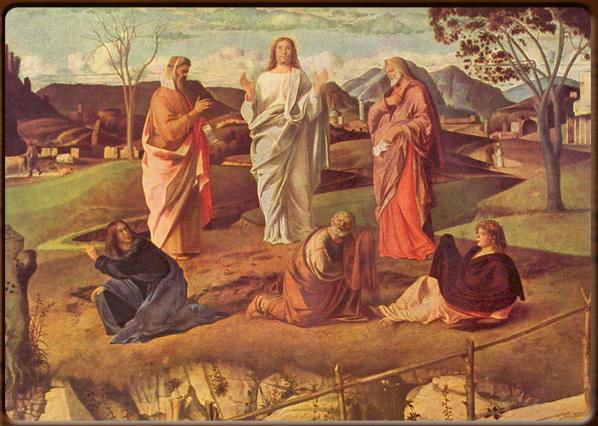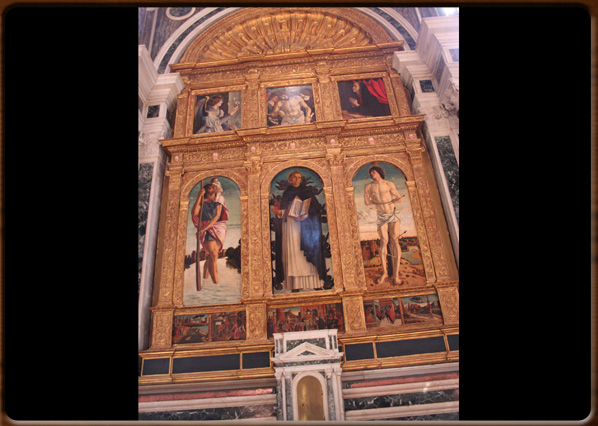
The Transfiguration. Giovanni Bellini, 1480 c., Museo Nazionale di Capodimonte Naples

Polyptych. Giovanni Bellini, 1464, SS. Giovanni e Paolo, Venice.


No video
Giovanni Bellini (Venice, 1430-1516), called “Giambellino”, was a painter and the son of a painter in the first half of the 1400s, Jacopo, famous for his “Madonna and Child” paintings.
He learned his art in his father’s workshop alongside his brother Gentile Bellini.
He later came into contact with Andrea Mantegna, his brother-in-law, differing from him in the way he paid greater attention to colour and natural light. This is evident in his Madonna Trivulzio in Castello Sforzesco, Milan.
In 1460 Giambellino became influenced by the Piero della Francesca school, as can be seen in his oil paintings on wooden panels, his Coronation of the Virgin (1473, Pesaro Civic Museum) and Transfiguration (1480, Capodimonte, Naples).
He also came into contact with Antonello da Messina (in Venice in 1475), leading to a series of fine works: his Sacred Allegory (1490-1500, Gallerie degli Uffizi, Florence), the marvellous altarpieces for the Venetian churches of San Giobbe, dei Frari and San Zaccaria and various Madonna paintings.
His later works show signs of new trends in Venetian painting, introduced by Giorgione and Titian. Titian actually completed one of his unfinished works, the Festino degli Dei (1514), now in the National Gallery of Art in Washington.
1300 - 1400 - - rev. 0.1.5